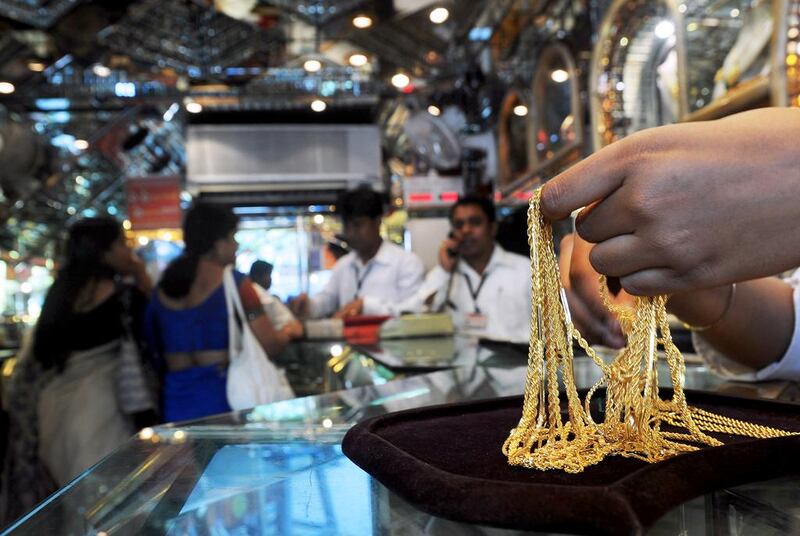India’s demand for gold is expected to surge this quarter to reach up to 300 tonnes, boosted by the festive and wedding season, according to the World Gold Council (WGC).
Demand for the precious metal in India is set to increase by about 15 per cent from this month to December compared with the same period last year, the organisation forecast.
Between July and September there was a lull, as imports of gold slumped after action taken by the Reserve Bank of India (RBI) in July.
Confusion resulted from RBI’s rule requiring importers to re-export at least 20 per cent of the gold brought into the country. Detailed guidelines were then issued in August, clarifying the matter.
The increase in demand would be driven by “20 per cent more auspicious days” compared with the same time last year, during which Indians would buy gold, as well as “pent-up demand”, said Somasundaram PR, the WGC’s managing director for India.
Gold is an important part of India’s culture and is traditionally given as a gift for weddings and festivals such as Diwali and Dussehra.
Good monsoon rains this year will also help to boost demand, Mr Somasundaram added, with bumper crops increasing disposable income for consumption in rural communities.
Robust demand in the fourth quarter could lead to India’s gold demand growing to between 900 and 1,000 tonnes from 864 tonnes last year. The country was the world’s biggest consumer of gold last year.
India has taken a series of steps to try to curb the country’s voracious appetite for gold, including repeatedly raising import duties on the metal. This is believed to have led to an increase in smuggling of gold into the country.
The government has been urging Indians to buy less gold because imports of the precious metal play a major role in the country’s gaping current account deficit and contributed to the depreciation of the rupee, which plunged to record lows against the US dollar over the summer.
Many Indians, particularly in rural areas, do not have a bank account, so investing in gold serves as an alternative means of storing wealth.
“In India it is also valuable to millions of consumers and investors for various reasons, not the least of which is the huge liquidity it provides outside the organised financial system, giving access to long-term savings, wealth protection and investments which would otherwise be unavailable,” said Mr Somasundaram.
The global gold industry contributed more than US$210 billion to the world’s economy last year, according to a report released by the WGC this week.
The study showed that large-scale gold mining made an economic contribution of more than $78.4bn to the economies of the top 15 mining countries last year.
Demand for gold, including purchases of small bars and coins as investments, as well as jewellery fabrication and consumption, generated an estimated $110bn in the top 13 gold consuming countries, according to the report.
“The data clearly shows that gold makes a significant contribution to global growth, including here in India,” said Mr Somasundaram. “Economic value generated from the industry has a direct impact on the economies where gold production or consumption takes place.”
business@thenational.ae





